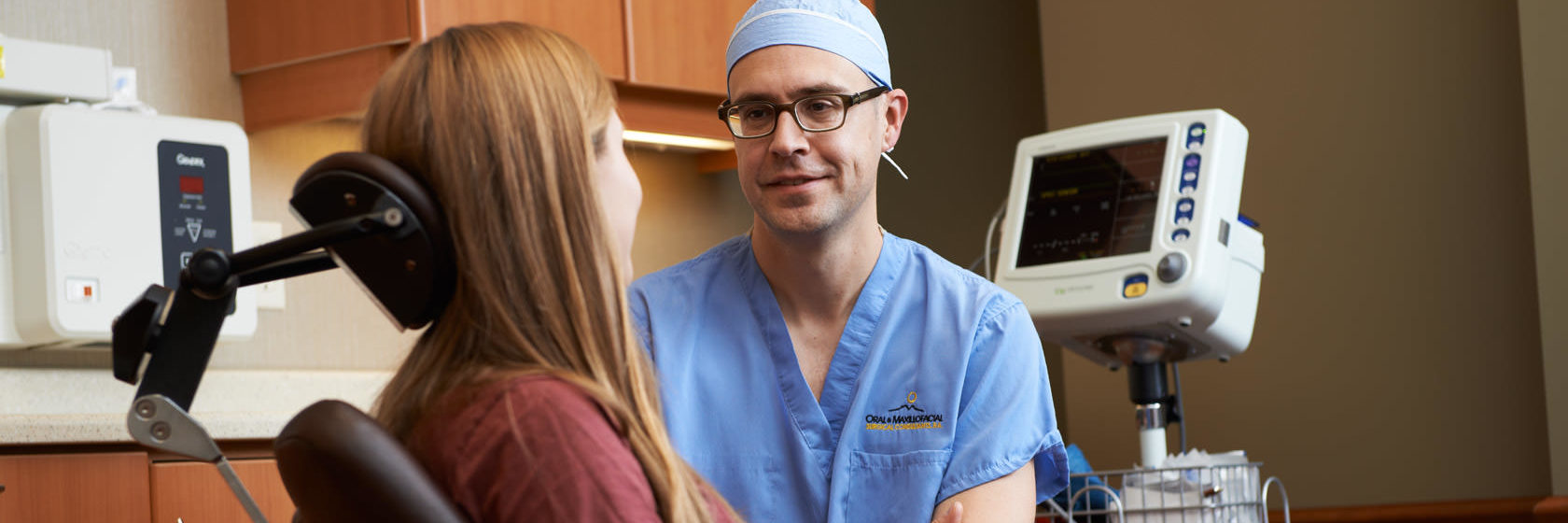Tooth Extractions
Tooth removal is one of the most common oral surgical procedures performed. Oral and Maxillofacial Surgeons are specifically trained in tooth removal in the most safe and effective manner. Tooth extractions are necessary for to a number a reasons ranging from dental decay (a cavity), gum disease, pain, infection, trauma, pathology, or for various orthodontic treatments. A patient will typically see his or her restorative dentist prior to seeing an oral surgeon to evaluate if a tooth can be kept or fixed. If the tooth is determined to need removal, the surgeons at Oral & Maxillofacial Surgical Consultants, will be able to quickly assess the tooth and perform an extraction that is safe, efficient and as comfortable as possible.
Consultation and recommendations:
A patient first will undergo a comprehensive consultation which will involve a review of his or her medical history, a thorough examination, and review of dental x-rays. Our experienced surgeons work in collaboration with the patient’s dentist to ensure the tooth extraction process is seamless. Drs. Omile, Haas, Kurtzman, Pearson, Sundick, Neuner, McMahon, Spanel, Omlie, Ziegler, Afwerke and McGowan routinely perform this type of surgery. Tooth extractions are performed in up to date operating suites at Oral and Maxillofacial Surgical Consultants with local anesthesia, nitrous oxide, and IV sedation, depending on the patient’s medical history and treatment needs.
Extraction Procedure:
Prior to performing a tooth extraction, the area of the tooth is numbed. This process involves administering local anesthesia, such as lidocaine, to the area surrounding the tooth to prevent discomfort during its removal. Depending on the patient’s medical history and type of dental extraction, additional adjuncts such as nitrous oxide or IV sedation may be administered. Please see Anesthesia link for further information.
During a tooth extraction, the patient will not feel any discomfort. However, it is common for the patient to experience some pressure to the area where the tooth is being removed. This pressure is caused by the tooth being loosened from the surrounding bone.
Teeth are often extracted in entirety from the tooth socket. At times due to tooth decay, tooth fracture, or a long or curved tooth root, the tooth may be removed in pieces. This process is called sectioning the tooth. During this process, the patient will not have any pain, but will feel a small amount of vibration in addition to the pressure during removal of the tooth pieces.
Gum tissue surrounding the tooth may by gently pushed out of the way to aid in removing the tooth. After the extraction is completed, the gum tissue is often re-positioned and held in place with a dissolvable stich. This stich will not need to be removed and will loosen and dissolve without causing any discomfort.
Post-operative care after tooth extractions:
See Post-operative home care instructions.
Tooth Maintenance and Good Oral Hygiene:
Teeth not only aid with chewing, speaking and facial esthetics, but are essential to a patient’s overall health and well-being. Good oral hygiene and routine examinations with a restorative dentist is extremely important and encouraged by the surgeons at Oral and Maxillofacial Surgical Consultants to prevent unnecessary tooth loss.
If a patient does not have a restorative dentist and experiences symptoms of pain, swelling, or discomfort associated with one or more of his or her teeth, the surgeons at Oral and Maxillofacial Surgical Consultants recommend seeing a restorative dentist as soon as possible to see if the tooth can be maintained. If a tooth ultimately needs to be removed, the surgeons will work to ensure a safe, comfortable, and efficient tooth extraction as possible.
